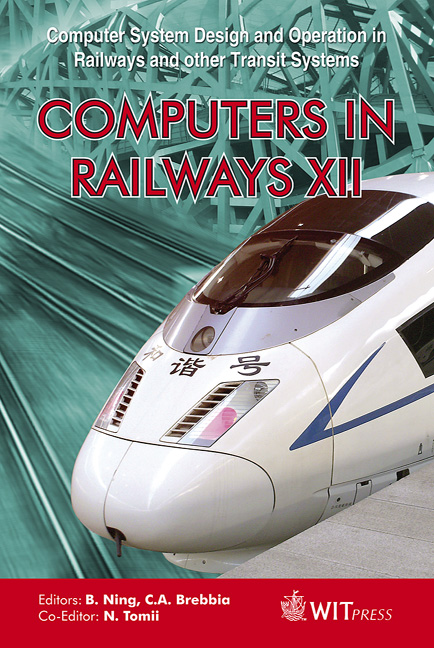Generating Optimal Signal Positions
Price
Free (open access)
Transaction
Volume
114
Pages
11
Page Range
307 - 317
Published
2010
Size
560 kb
Paper DOI
10.2495/CR100291
Copyright
WIT Press
Author(s)
E. A. G. Weits & D. van de Weijenberg
Abstract
In The Netherlands railway traffic is growing. As the growth has to be largely accommodated on existing tracks, short headways are increasingly important. Headways are mainly determined by signal positions. Since signal positions are subject to many diverse constraints, finding a good signal positioning scheme by hand is a time-consuming task and it is nearly impossible to prove optimality. Therefore, an algorithm that generates an optimal signal positioning scheme, taking care of all constraints, has been designed and implemented in a computer program for infrastructure planners. The algorithm calculates the sequence of signal positions that minimises the weighted sum of headways for a set of trains, each pair of trains with a common track yielding possibly two headways. The first step of the algorithm consists of a tree search leading to an enumeration of groups of similar signal sequences. Secondly, a linear programming problem is applied to all groups in order to find the best solution within each group. A validation study showed that the signal positioning scheme produced by the algorithm slightly outperforms the results found manually, as long as the computer program is restrained to the same number of signals as used in the manual solution. In a number of cases, the computer program suggested better solutions using a larger number of signals. The results of the validation study have led to adoption of the computer program for use in projects. At the same time further research to improve the computational speed has started. Keywords: railway capacity, signalling scheme, signal positions, headways. 1 Introduction The Dutch railway network is heavily utilised and the number of passengers is growing by between 3 and 5 percent a year. Therefore, the intention is to increase the frequency of departures from 4 to 6 times per hour, for intercity
Keywords
railway capacity, signalling scheme, signal positions, headways





